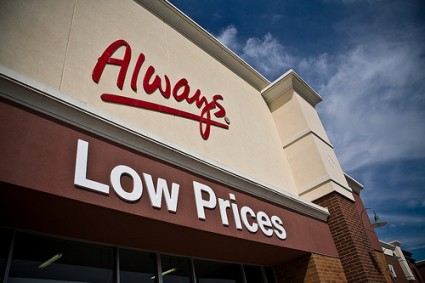 Wal-Mart made big news today with a major commitment to trim its greenhouse-gas emissions.
Wal-Mart made big news today with a major commitment to trim its greenhouse-gas emissions.
Here’s the context: Over the past five years the retail giant has taken big, splashy steps to save energy, reduce waste, and sell cleaner products, like compact-fluorescent light bulbs. It’s given less focus to the impact of the factories that churn all over the world to keep the chain’s shelves and display cases full. Today’s announcement—a goal to cut 20 million metric tons of greenhouse-gas emissions by the end 2015—focuses on those factories.
Wall Street Journal reporter Miguel Bustillo reads this as a cop-out, which is odd:
Wal-Mart will make its suppliers do the dirty work of reducing the carbon footprints of their global supply chains.
But the focus on suppliers is the best part of the new plan, according to Elizabeth Sturcken of Environmental Defense Fund, Wal-Mart’s partner in crafting the plan:
Wal-Mart’s supply chain is where the action is. It’s the biggest possible lever that Wal-Mart could bring to the table. Wal-Mart will work with suppliers to reduce their emissions — which they otherwise might not do — resulting in positive ripple effects around the globe.
Two more advantages, says Sturcken:
It prioritizes the biggest opportunities. Wal-Mart is looking at the products that create the most carbon emissions across their lifecycles — as well as products that are top sellers — and focusing on those first.
It gets carbon pollution reductions now. There’s no waiting for the United States or the world to act.
Marc Gunther of GreenBiz.com gives Wal-Mart “two cheers” for the supply-line approach:
Better, as one of my sources told me, to improve practices at 10,000 factories around the world than simply to make [Wal-Mart’s] operations more efficient.
Stacy Mitchell, a researcher at the New Rules Project, author of Big Box Swindle, and long-time critic of Wal-Mart, gives a skeptical take:
By focusing on suppliers, Wal-Mart continues to deflect attention from the enormous greenhouse gas implications of its own business model. Wal-Mart is rapidly expanding in China, Mexico, and other countries, where it is destroying neighborhood businesses and replacing them with an auto-oriented form of big-box shopping that is highly polluting. [emphasis added]
Good point. It’s tough to quantify the damage Wal-Mart does to local, centralized businesses, either in the places where it’s well-established (the U.S.) or the places it’s expanding (China and Mexico).
Bradford Plumer of The New Republic offers a reminder that while talk is cheap, it’s the follow-through that matters:
Still, it’s easy to wonder how committed Wal-Mart will be to seeing this effort through. The store’s ongoing green initiatives—from buying up gobs of solar power to rooting out wasteful packaging—have all been impressive. But becoming cleaner or more efficient can sometimes involve hefty upfront costs, and even if it saves money over the long-term, that may prove hard to square with Wal-Mart’s focus on constantly hammering prices downward.
Whether the issue is Wal-Mart’s promises to reduce its ecological footprint, or Seattle’s promise to erase its footprint, or the international pledge circus, the thing to watch is the execution.
On a completely related note, here’s a weird video from Wal-Mart on “The Secret Life of Sour Cream”:
[vodpod id=Video.16125515&w=425&h=350&fv=]
